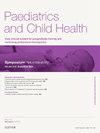How to interpret creatine kinase level in neuromuscular conditions
Q3 Medicine
引用次数: 0
Abstract
Creatine kinase (CK) is a screening diagnostic test for suspected neuromuscular disease. It is a sensitive indicator of muscle injury and is preferred to other skeletal muscle enzymes as it is least affected by haemolysis, is readily released in cellular injury and has a relative predominance in skeletal muscle. In a healthy individual the normal range varies between 22 and 200 IU/L (varies with laboratory), although gender and race can influence this range. CK can also be elevated in non-pathological transient situations such as cramps and post-exercise. It can increase up to three times the normal value after strenuous exercise, intramuscular injections, EMG studies and viral infections. Highest level of CK is seen in inflammatory myopathies and in early stages of DMD when patients are still ambulant. Occasionally CK is elevated in asymptomatic or mildly symptomatic children and this creates unwarranted anxiety and diagnostic uncertainties. The need for extensive ancillary investigations and muscle biopsy in clinically normal individuals with elevated CK remains an unresolved issue. This review discusses the diagnostic value of creatine kinase in neuromuscular conditions in children and offers practical advice about how results should be interpreted in different clinical situations.
如何解释肌酸激酶在神经肌肉疾病中的水平
肌酸激酶(CK)是一种用于疑似神经肌肉疾病的筛查诊断试验。它是肌肉损伤的敏感指标,比其他骨骼肌酶更受欢迎,因为它受溶血的影响最小,在细胞损伤时容易释放,在骨骼肌中相对占优势。在健康个体中,正常范围在22至200 IU/L之间(随实验室而异),尽管性别和种族会影响该范围。CK也可在非病理性暂时性情况下升高,如痉挛和运动后。在剧烈运动、肌肉注射、肌电图检查和病毒感染后,它可以增加到正常值的三倍。最高水平的CK见于炎性肌病和DMD的早期阶段,此时患者仍在走动。偶尔CK在无症状或轻度症状的儿童中升高,这会造成不必要的焦虑和诊断的不确定性。需要广泛的辅助调查和肌肉活检的临床正常个体升高CK仍然是一个悬而未决的问题。这篇综述讨论了肌酸激酶在儿童神经肌肉疾病中的诊断价值,并就如何在不同的临床情况下解释结果提供了实用的建议。
本文章由计算机程序翻译,如有差异,请以英文原文为准。
求助全文
约1分钟内获得全文
求助全文
来源期刊

Paediatrics and Child Health (United Kingdom)
Medicine-Pediatrics, Perinatology and Child Health
CiteScore
1.20
自引率
0.00%
发文量
70
 求助内容:
求助内容: 应助结果提醒方式:
应助结果提醒方式:


